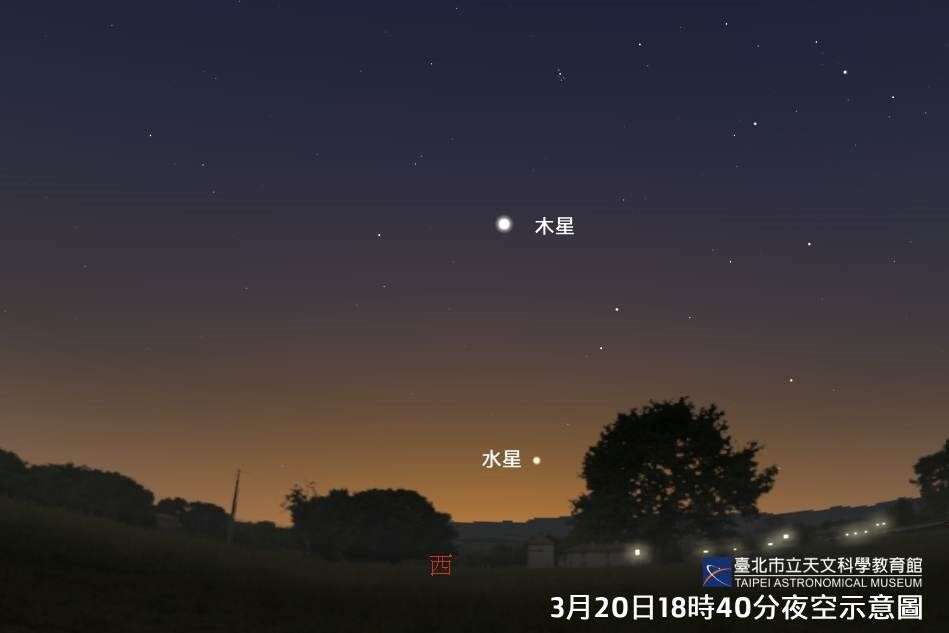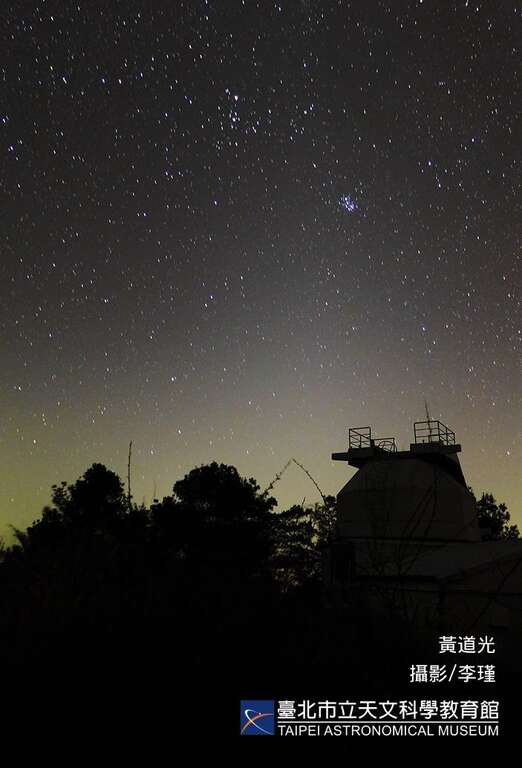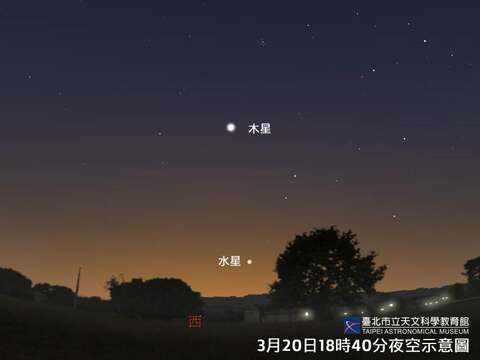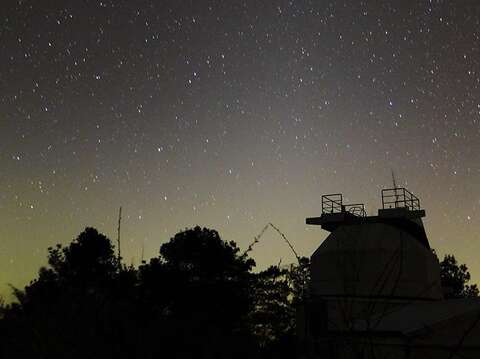Post date:2024-03-20
Updates:2024-03-29
424
As the cold winter gradually fades away, the temperature in spring nights is no longer harsh. Before the intense heat arrives, March is a good time to see the wonderful celestial phenomena at night, including the zodiacal light, Venus conjunction with Saturn, and the eastern elongation of Mercury . All will be staged in the night sky in March!

This vernal equinox of year falls on Wednesday, March 20th. The sun shines directly on the equator on this day and results in an equal amount of daylight and darkness. The star period before and after the vernal equinox is also the best time to appreciate the zodiacal light. Within 2 hours after sunset, the zodiacal light can be seen in the western sky as a pale white cone extending upward from the horizon. This peculiar zodiacal light limited to spring comes from sunlight scattered by dust particles in the solar system. Since the dust is distributed in a lens shape on the ecliptic plane centered on the sun, it looks like a triangular cone from the earth. The widest base angle measures about 40 degrees, and the height can reach nearly 70 degrees. It is very conspicuous when watched in a place with clear weather, no moonlight and clean air.
The "Venus-Saturn Conjunction " will occur on Friday, March 22nd. The two planets will move to the conjunction position at 10 a.m. The distance between the two is only 0.35 degrees, less than a full moon. Besides, the best time to watch it is on that day from 5:30 a.m. to a short time before dawn. Although 1st-magnitude Saturn is not obvious in the twilight, it is not difficult to observe with the guidance of -3.9th-magnitude Venus, which is 50 times brighter.

The evening of March 25th (Monday) will be the first "Eastern Elongation of Mercury" this year. It will shine at -0.2 magnitude. The sky watchers can see the elongation in these days with the naked eye in the unsheltered space in the west before the Mercury disappears below the horizon after sunset to 7:30 pm.
The first appearance of the stars in the spring sky is also worth watching. Leo, Virgo, Ursa Major, Ursa Minor, and Boötes are all familiar constellations. You might as well take advantage of a clear night to see their true appearance. Taipei Astronomical Museum has specially produced the "Understanding the Starry Sky ” YouTube planetarium program. It also offers us a glimpse into the nature of all stars. The Taipei Astronomical Museum highly recommends that you dive into the program before going out to look up at the stars, and to see the glowing point of light and starry sky.

This vernal equinox of year falls on Wednesday, March 20th. The sun shines directly on the equator on this day and results in an equal amount of daylight and darkness. The star period before and after the vernal equinox is also the best time to appreciate the zodiacal light. Within 2 hours after sunset, the zodiacal light can be seen in the western sky as a pale white cone extending upward from the horizon. This peculiar zodiacal light limited to spring comes from sunlight scattered by dust particles in the solar system. Since the dust is distributed in a lens shape on the ecliptic plane centered on the sun, it looks like a triangular cone from the earth. The widest base angle measures about 40 degrees, and the height can reach nearly 70 degrees. It is very conspicuous when watched in a place with clear weather, no moonlight and clean air.
The "Venus-Saturn Conjunction " will occur on Friday, March 22nd. The two planets will move to the conjunction position at 10 a.m. The distance between the two is only 0.35 degrees, less than a full moon. Besides, the best time to watch it is on that day from 5:30 a.m. to a short time before dawn. Although 1st-magnitude Saturn is not obvious in the twilight, it is not difficult to observe with the guidance of -3.9th-magnitude Venus, which is 50 times brighter.

The evening of March 25th (Monday) will be the first "Eastern Elongation of Mercury" this year. It will shine at -0.2 magnitude. The sky watchers can see the elongation in these days with the naked eye in the unsheltered space in the west before the Mercury disappears below the horizon after sunset to 7:30 pm.
The first appearance of the stars in the spring sky is also worth watching. Leo, Virgo, Ursa Major, Ursa Minor, and Boötes are all familiar constellations. You might as well take advantage of a clear night to see their true appearance. Taipei Astronomical Museum has specially produced the "Understanding the Starry Sky ” YouTube planetarium program. It also offers us a glimpse into the nature of all stars. The Taipei Astronomical Museum highly recommends that you dive into the program before going out to look up at the stars, and to see the glowing point of light and starry sky.
 March promises a set of eye-catching celestial events, including the zodiacal light and the eastern elongation of Mercury.
March promises a set of eye-catching celestial events, including the zodiacal light and the eastern elongation of Mercury.




